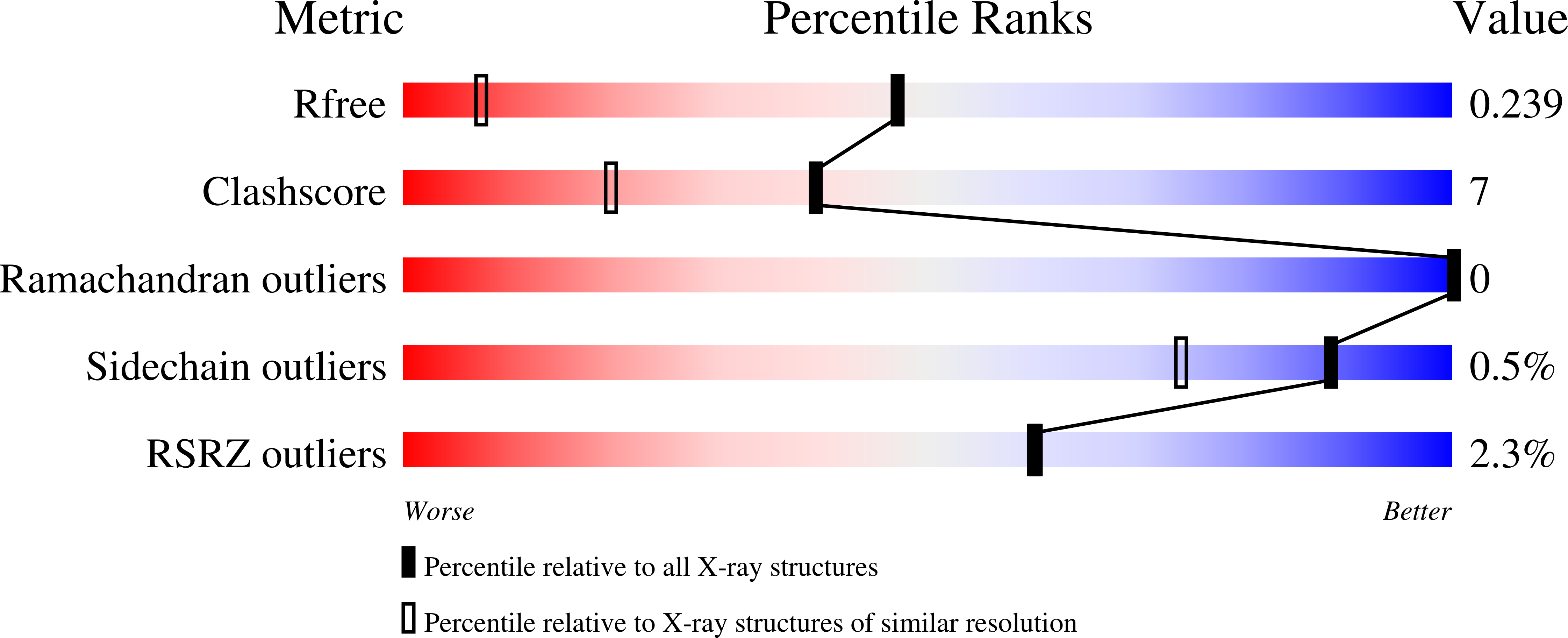Structural Consequences of the Inhibitor-Resistant Ser130Gly Substitution in TEM beta-Lactamase.
Thomas, V.L., Golemi-Kotra, D., Kim, C., Vakulenko, S.B., Mobashery, S., Shoichet, B.K.(2005) Biochemistry 44: 9330-9338
- PubMed: 15981999
- DOI: https://doi.org/10.1021/bi0502700
- Primary Citation of Related Structures:
1YT4 - PubMed Abstract:
Beta-lactamase confers resistance to penicillin-like antibiotics by hydrolyzing their beta-lactam bond. To combat these enzymes, inhibitors covalently cross-linking the hydrolytic Ser70 to Ser130 were introduced. In turn, mutant beta-lactamases have emerged with decreased susceptibility to these mechanism-based inhibitors. Substituting Ser130 with glycine in the inhibitor-resistant TEM (IRT) mutant TEM-76 (S130G) prevents the irreversible cross-linking step. Since the completely conserved Ser130 is thought to transfer a proton important for catalysis, its substitution might be hypothesized to result in a nonfunctional enzyme; this is clearly not the case. To investigate how TEM-76 remains active, its structure was determined by X-ray crystallography to 1.40 A resolution. A new water molecule (Wat1023) is observed in the active site, with two configurations located 1.1 and 1.3 A from the missing Ser130 Ogamma; this water molecule likely replaces the Ser130 side-chain hydroxyl in substrate hydrolysis. Intriguingly, this same water molecule is seen in the IRT TEM-32 (M69I/M182T), where Ser130 has moved significantly. TEM-76 shares other structural similarities with various IRTs; like TEM-30 (R244S) and TEM-84 (N276D), the water molecule activating clavulanate for cross-linking (Wat1614) is disordered (in TEM-30 it is actually absent). As expected, TEM-76 has decreased kinetic activity, likely due to the replacement of the Ser130 side-chain hydroxyl with a water molecule. In contrast to the recently determined structure of the S130G mutant in the related SHV-1 beta-lactamase, in TEM-76 the key hydrolytic water (Wat1561) is still present. The conservation of similar accommodations among IRT mutants suggests that resistance arises from common mechanisms, despite the disparate locations of the various substitutions.
Organizational Affiliation:
Graduate Program in Pharmaceutical Sciences and Pharmacogenomics, University of California, San Francisco, San Francisco, California 94143, USA.














